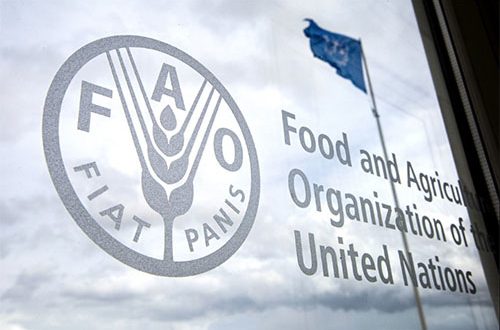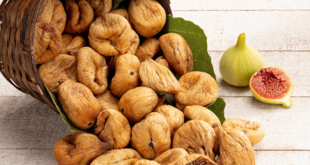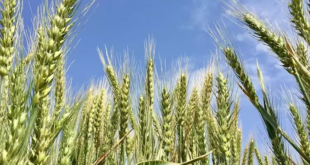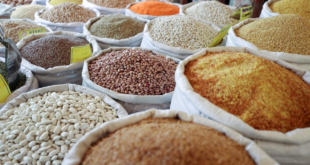Press release…
The FAO Food Price Index* (FFPI) averaged 120.4 points in November 2023, unchanged from its revised October level, as increases in the price indices for vegetable oils, dairy products and sugar counterbalanced decreases in those of cereals and meat. The index stood 14.4 points (10.7 percent) below its corresponding level one year ago.

» The FAO Cereal Price Index averaged 121.0 points in November, down 3.7 points (3.0 percent) from October and as much as 29.1 points (19.4 percent) from its value a year ago. International prices of coarse grains fell the most, dropping by 5.6 percent month-on-month. The decline was dominated by a sharp fall in world maize prices, underpinned by an increase in farmers’ selling activity in Argentina and a downward pressure from seasonally higher supplies in the United States of America, where the production estimate was revised upwards. Among other coarse grains, world prices of barley fell, while sorghum prices firmed slightly. International wheat prices also declined, by 2.4 percent in November, mainly driven by increased seasonal supplies in Argentina and Australia, with the progress in the harvests and the continued strong competition from the Russian Federation. Meanwhile, the FAO All Rice Price Index remained stable month-on-month in November amidst contrasting price movements across origins and market segments.
» The FAO Vegetable Oil Price Index averaged 124.1 points in November, up 4.1 points (3.4 percent) from October after declining for three consecutive months. The increase in the price index was driven by higher world palm and sunflower oil prices, more than offsetting lower soy and rapeseed oil quotations. International palm oil prices rebounded by more than 6.0 percent in November, chiefly underpinned by more active purchases by leading importing countries and seasonally lower outputs in major producing countries. World sunflower oil prices also rose moderately, mainly supported by a continued steady pace of import purchases. By contrast, international soyoil prices dropped slightly on subdued global import demand, outweighing the impact of lower soybean production prospects in Brazil, while lingering abundant world supplies contributed to lower world rapeseed oil prices.

» The FAO Dairy Price Index averaged 114.2 points in November, up 2.5 points (2.2 percent) from October, marking the second consecutive monthly increase, but still down 23.2 points (16.9 percent) from its value one year ago. In November, international price quotations for butter and skim milk powder increased, reflecting high import demand from Northeast Asian buyers, limited inventories, and increased internal demand ahead of winter holidays in Western Europe. The same factors lifted whole milk powder prices, however, persistently subdued demand from Asian buyers, together with steady production activities in Oceania, capped the month-on-month increase. The weakening of the United States dollar against the euro also contributed to the increase in world dairy prices. By contrast, world cheese prices continued to trend downward on high exportable availabilities, especially for cheddar cheese, despite seasonally tight milk deliveries in Western Europe.

» The FAO Meat Price Index* averaged 111.8 points in November, down marginally (0.4 percent) from October, reflecting minor drops in the prices of poultry, pig and bovine meats. At this level, the index value stood 2.8 points (2.4 percent) below its corresponding value one year ago. The drop in international poultry meat prices reflected elevated supplies, mainly from Brazil, notwithstanding the challenges to production stemming from avian influenza outbreaks across many countries. Pig meat prices were down due to persistent sluggishness in import demand in Asian markets and ample exportable availabilities in some exporters, despite a surge in internal sales in Europe ahead of the winter holidays. Meanwhile, ample exportable supplies from Brazil and Oceania weighed on world bovine meat prices. By contrast, ovine meat prices rose slightly, mostly reflecting the impact of currency movements.
» The FAO Sugar Price Index averaged 161.4 points in November, up 2.2 points (1.4 percent) from October and as much as 47 points (41.1 percent) from its level in the same month last year. The increase in prices in November was mostly related to heightened concerns over global export availabilities in the current season amid worsening production prospects in two leading exporters, Thailand and India, due to severe dry weather conditions associated with the El Niño event. In addition, shipping delays from Brazil, coupled with the strengthening of the Brazilian real against the United States dollar, contributed to the overall increase in world sugar prices. Nevertheless, the strong pace of production in Brazil and lower international crude oil prices limited the month-on-month price increase.
* Unlike for other commodity groups, most prices utilized in the calculation of the FAO Meat Price Index are not available when the FAO Food Price Index is computed and published; therefore, the value of the Meat Price Index for the most recent months is derived from a mixture of projected and observed prices. This can, at times, require significant revisions in the final value of the FAO Meat Price Index which could in turn influence the value of the FAO Food Price Index.
 THE GLOBAL WINDOW OF TURKISH FOOD AND AGRICULTURE The Global Window of Turkish Food and Agriculture Sector
THE GLOBAL WINDOW OF TURKISH FOOD AND AGRICULTURE The Global Window of Turkish Food and Agriculture Sector









